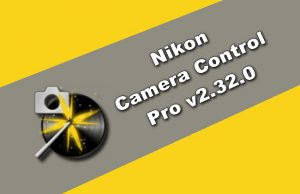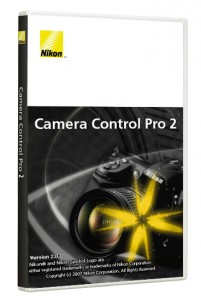

In addition, in July 1980 NIKONOS IV-A was released as a successor to NIKONOS III through a complete change of the mechanisms involving the substitution of mechanical shutter by the electronically controlled type, incorporation of TTL metering aperture-priority AE and ease of film changing by opening/closing the back cover. The FE was favorably received and the sales increased, reaching the sales volume of 250,000 per year and a total turnover of 10 billion yen for three years from FY 1979 to FY 1981, which made this model a mainstay of the sales in Nippon Kogaku K.K.
#NIKON CAMERA CONTROL PRO 2 ITALIANO MANUAL#
The Nikon FM sold well, though its shutter was mechanical and involved manual exposure control, and then, in April in the next 1978, the aperture-priority AE SLR camera Nikon FE (with a 50 mm f/1.8 at 95,000 yen) with the electronically controlled shutter went on sale. In order to accommodate the trend toward compact size (142 x 89.5 x 60 mm), reduced weight (590 g) and lower prices, we brought out an AI-compatible new model Nikon FM (the model with 50 mm f/2, put on sale at a suggested retail price of 81,000 yen) in May 1977.

In response to this, the market trend of AE SLR cameras was directed towards low-end models. In April 1976, the shutter speed-priority AE SLR camera which offered features such as a microcomputer (configured with CPU in the form of a single module on a flexible board), unitized internal mechanisms, 50 mm f/1.4 standard lens, and prices far below 100,000 yen appeared in the home market. The AI Nikkor lenses were compatible with our existing SLR cameras (F mount), and most of the existing Nikkor lenses were made to accommodate the AI System through some modifications. The AI System involved changes in the design of the lens diaphragm mechanism next, we focused lens production on AI Nikkor. In July of the same year, Nikon F2 Photomic AS from Nikon F2 Photomic SB. In May in the same year, Nikon EL2 as an upgraded version based on the integration of Nikomat EL and ELW and In March 1977, Nikon F2 Photomic A from Nikon F2 Photomic S, and Nikomat FT3 from Nikomat FT2 Then, we marketed AI (Automatic Maximum Aperture Indexing) System * in 1977 to provide automatic correction of the maximum aperture once a lens was mounted, and released the AI System-integrated cameras in succession as follows by redesigning the existing models:
#NIKON CAMERA CONTROL PRO 2 ITALIANO FULL#
However, it was then necessary to let the exposure meter on a camera learn different maximum apertures depending on the lens used by turning the aperture ring to the full and returning it to the original position, after mounting the lens to engage the shoe on the aperture ring and the exposure meter coupling pin on the camera body. Our SLR cameras with the TTL exposure meter adopted the full-aperture metering for exposure measurement.

The Nikomat ELW with the auto-winder AW-1 won the Good Design Mark in 1976. The Nikomat ELW inherited the aperture-priority automatic exposure control of EL and newly incorporated the coupling and electric contact point for automatic film winding with the auto-winder AW-1, and a power switch on the ring around the shutter release button in addition to that on the film advance lever. In keeping with the trend toward electronic and compact SLR cameras, we released Nikomat EL (weighing 780 g) with an electronic shutter in 1972, and Nikomat ELW in February 1976. The downsizing of SLR cameras accelerated from 1975 onwards with the emergence in 1973 of compact and lightweight 135-format SLR cameras weighing 470 g. Around 1975, digital control became available with a large-scale circuit configuration with a microcomputer to allow shutter control using a crystal oscillator (quartz). The circuit configuration was initially a small-scale analog design. This was the result of the SLR cameras becoming increasingly electronized, so that they were coming out with varied exposure control options, improved ease of operation for photography with the program AE (automatic exposure control), reduced size and lower prices.Įlectronic SLR cameras became popular around 1965 with the introduction of electronic shutters for automatic exposure control. Production of single-lens reflex (SLR) cameras in Japan reached the 7.56 million mark in 1980 from the 2.76 million mark in 1974, having reached the peak of its popularity. Electronic SLR cameras and lower-price models


 0 kommentar(er)
0 kommentar(er)
